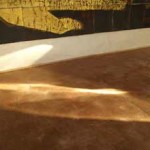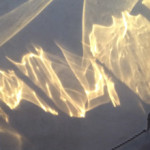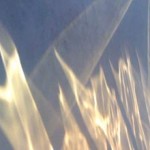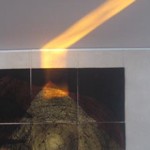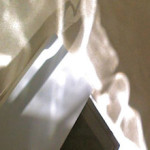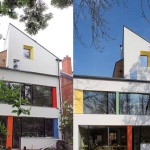We created a house that is bathed in natural light. The more daylight in a home, the less electricity is used in lighting. The changing patterns and colours of the natural light in zero carbon house give a constantly shifting connection with the rhythms of the sky, the day and the year. Sunlight is important too in heating the house.
Double-height living area
We enjoy a double height living room with natural light coming in through the roof. Top lighting is typically at least five times brighter than window lighting as there are no obstructions to the sky and it’s brighter at its zenith. That means only one fifth of the heat loss compared with a window, so it’s a very energy-efficient way of lighting. We also have triple-glazed roof lights over the stairs, bedroom and the top floor Long Room.
Mirrors
We put mirror linings onto the splayed surrounds to our windows and rooflights, which reflect shimmering patches of sunlight around the house. Mirrors are used to intensify the light to great effect in the bathroom too. Our nephew counted his reflection there 28 times. As well as increasing and animating the natural light, the mirrors also spread sunlight and useful heat to parts of the house that wouldn’t otherwise receive it.
Honeycomb door
The sliding door between our lobby and the main house is made from Mykon, a lightweight, double-skinned material that filters and reflects lights into the house with a touch of magic. We like the irregular honeycomb hexagonal core.
Honeycomb landing
We used the same Mykon material to our stair landing, so natural daylight from above can filter down to the ground floor hall.
Ash tree
The ash tree in the back garden is an important feature of our zero carbon home. The floor to ceiling windows overlooking the back garden face south-west so they need to be shaded in the summer. The leaves of the ash tree shade the glass from the high summer sun. In the winter, when sunshine is welcome and gives useful heat gains, the bare trees allows the low winter rays to penetrate deep into the house.
You might also be interested in:
